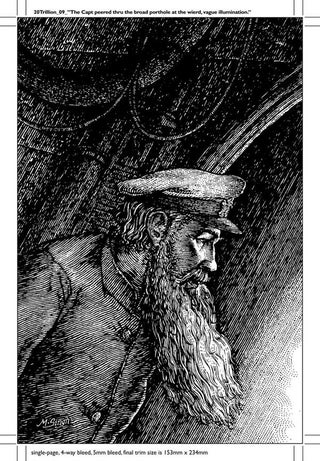Sometimes the edge of space can almost be as good as space itself — that is, when it comes to telescopes riding airships at the top of Earth’s tenuous and rarefied stratosphere.
High Altitude Airships (HAAs), until now largely the purview of defense-related research, may ultimately find their rightful place as vehicles of science and industry.
At least that’s the hope of Sarah Miller, an astronomer and Chancellor’s ADVANCE Fellow at the University of California at Irvine.
Miller and colleagues are hoping to turn a February 2014 Keck Institute for Space Studies (KISS) report on the potential uses of stratospheric airships for science into a NASA-sponsored challenge to make HAAs a viable astronomical observing platform.
“The military has tried and failed to develop a vehicle, because they tried to move from a [stratospheric] ‘Kitty Hawk’[-type] situation to a ‘Boeing 747’ on extremely aggressive timescales that were all doomed to fail,” said Miller, one of the workshop study’s co-leads. “But astrophysics, cosmology, and earth and atmospheric sciences all motivate the development of these vehicles. So, we could actually see them succeed over the next decade.”
Jason Rhodes, a cosmologist at NASA JPL and also one of the workshop study’s co-leads, thinks an airship should be able to operate at a fraction of a cost of a dedicated space mission and at some 20,000 ft higher than the highest flying commercial aircraft.
“About 60,000 ft in the stratosphere is the sweet spot for these craft,” said Rhodes. “That’s about as high as you can go and still have enough of an atmosphere to propel against.”
Yet researchers say the atmospheric turbulence at that altitude is still low enough to get what is known as telescopic “diffraction-limited” seeing at optical wavelengths. That means the telescope’s resolution of distant objects is only limited only by the size of the telescope’s mirror and not by the blurring effects of the atmosphere.
And at such altitudes, astronomers would expect to do much better in the ultraviolet and the sub-millimeter and millimeter ranges.
The Hubble Space Telescope (HST) is currently the only space telescope operating in that ultraviolet wavelength range, says Rhodes, and it will reach the end of its lifetime in 5 to 10 years. Thus, he says in the next decade, even a one-meter aperture stratospheric telescope could “really complement” NASA’s space missions.
However, as Rhodes notes, at 65,000 feet, the airship will still encounter some telescopic jitter from stratospheric winds. It’s a problem that Rhodes says HAA designers are still trying to work through.
In principle, a one-meter airship telescope could be up for many weeks or months at a time and do station-keeping which would allow for line of sight communications with a ground station. Likely powered by lightweight propellers, such an airship’s instruments and propulsion system would be run by energy gleaned from solar photovoltaic arrays within or on the airship’s surface.
But to date, as Rhodes notes, no one has even demonstrated an airship that could fly for 24 hours at a time at such altitudes. Even so, if there’s enough interest in such an airship for astronomy, Rhodes says NASA will run an X Prize-styled challenge over the next couple of years.
Rhodes says NASA has not yet committed itself to running the challenge, but sometime this Fall he and colleagues will initiate a Request for Information (RFI) from potential challenge participants.
“It would be a two-tiered challenge,” said Rhodes. “The first would be to fly an airship for 20 hours with a small 20 kg payload at an altitude of 20 km for a $1 million prize. A second would be a 200 kg payload at 20 km for 200 hours for a $2 to $4 million prize.”
Northrup Grumman, Lockheed Martin Space Systems, Raven Aerostar, the Near Space Corporation and the Southwest Research Institute (SWRI) have all expressed interest in further work on HAA technology.
Rhodes says there are parallel drivers for the airship tech to develop and mature. Thus, aerospace companies interested in HAAs for defense or telecommunications applications might end up developing an HAA design that astronomers could then adapt as an observational platform.
“I could see NASA having a fleet of these airships that they could either rent out, or let the public use through a competitive process,” said Rhodes.
To cut costs, Rhodes says such research airships could be multi purpose — using the platform for earth science observations during the day, while switching to astronomical mode at night.
Rhodes says it might even be able to compete with SOFIA (Stratospheric Observatory for Infrared Astronomy), actually a modified flying Boeing 747, which he says can have operational costs of up to $70 to $80 million a year.
“These stratospheric platforms are much more stable, still, and flexible than traditional fixed wing aircraft platforms [like SOFIA],” said Miller.
An astronomical HAA could potentially access wavelengths that SOFIA can’t, which would be a real boon for millimeter and sub-millimeter observations. Such observations are crucial for detecting water in emerging protoplanetary disks around other nearby stars as well as taking high-resolution images of the very early universe’s Cosmic Microwave Background (CMB).
And as a helium-filled structure, an airship could be launched from regions of the world that normally wouldn’t be conducive to optical astronomical observations. Then the onboard telescope could either be controlled remotely or be fully automated.
Unlike traditional low altitude blimps which need a sizable ground crew, Miller says, some of these airships have been designed to be launched “out of a box” by one or two people.
“At least a 4-meter class airship telescope is possible using full-scale design concepts and without an onboard crew,” said Miller. “We’ve gotten very good at automation and remote control of these telescopes.”
And unlike most spacecraft, NASA could keep reusing these airships; switching out telescopes and instruments as observations warrant.
For the last 14 years, Rhodes says he’s been working on mission concepts to study Dark Energy with both NASA and the U.S. Department of Energy. But Rhodes says he is looking for a game-changing way to make that whole process faster. One that allows access to space-quality astronomical data without so much lag time from idea to launch.
This would help astronomers quickly and affordably react to new science discoveries and do astronomical observations from a space-like environment.
Rhodes says an affordable airship platform would also fill gaps in NASA’s observational capability, particularly when trying to answer fundamental questions about the universe.
If such airships could be had for only tens of millions of dollars, institutions that could normally never access state of the art telescopes would suddenly find themselves with their own private windows onto a pristine sky.
Source: forbes.com




























